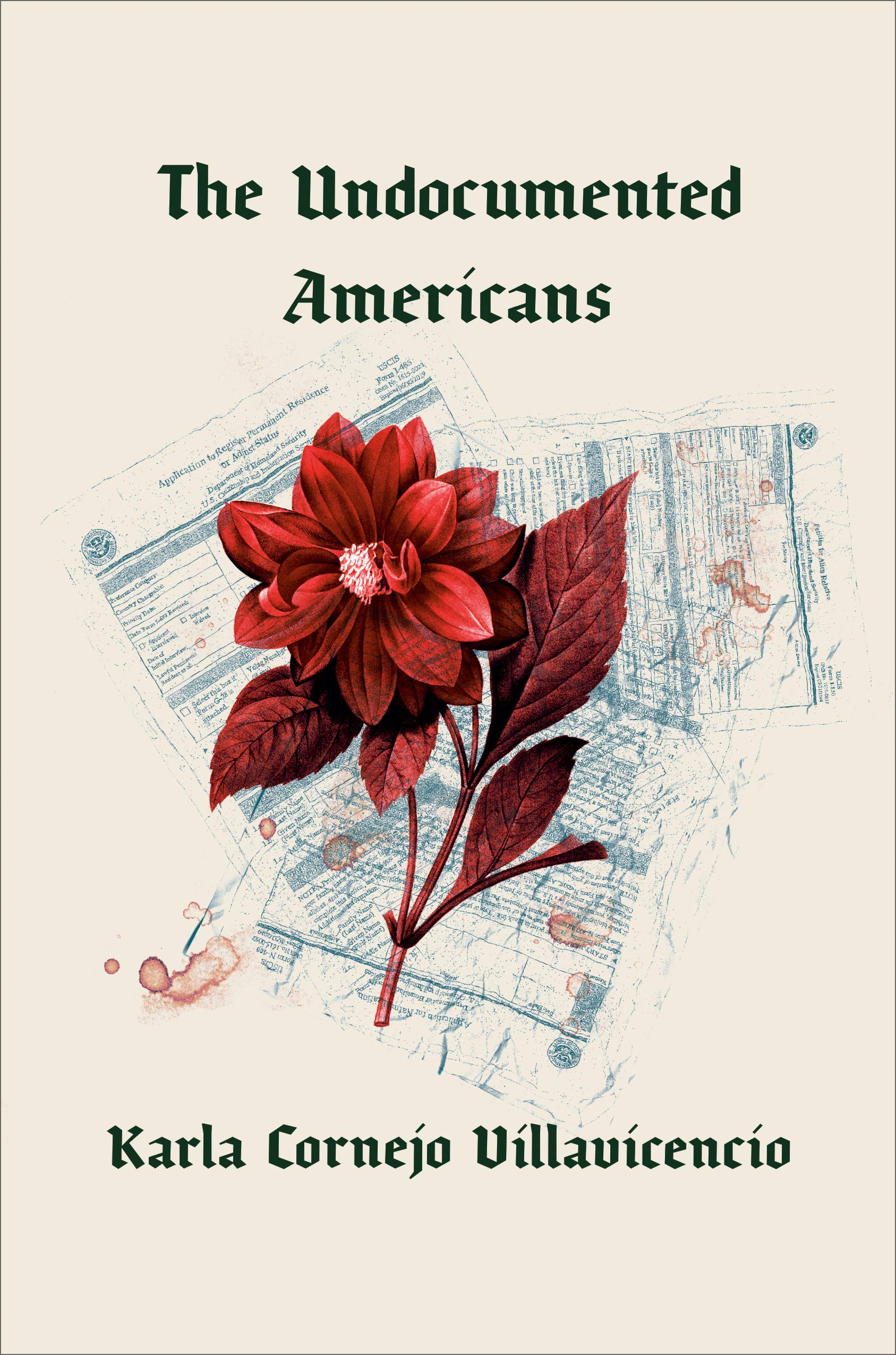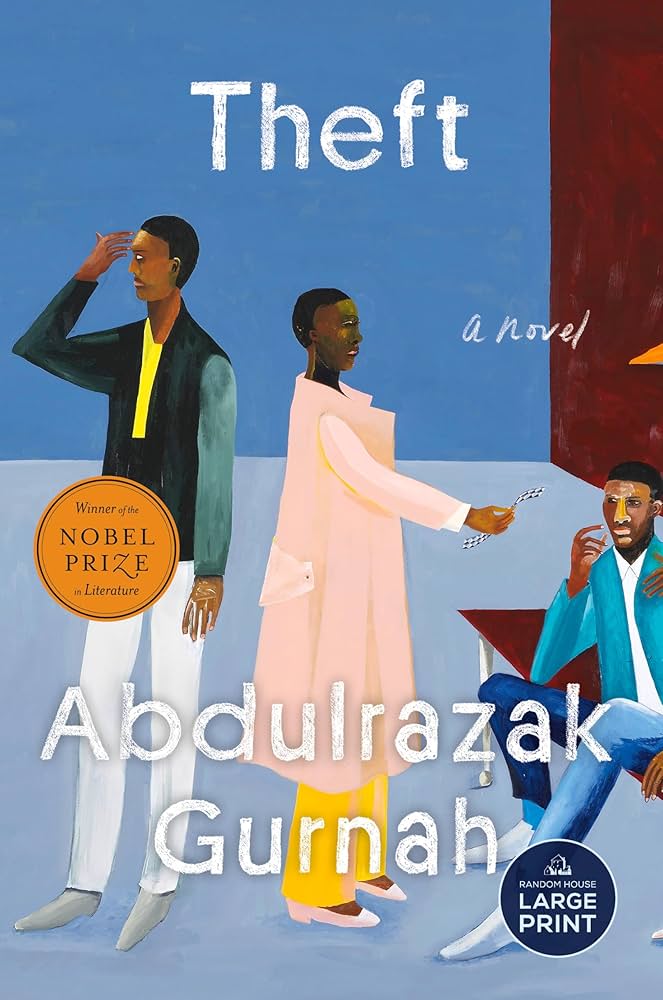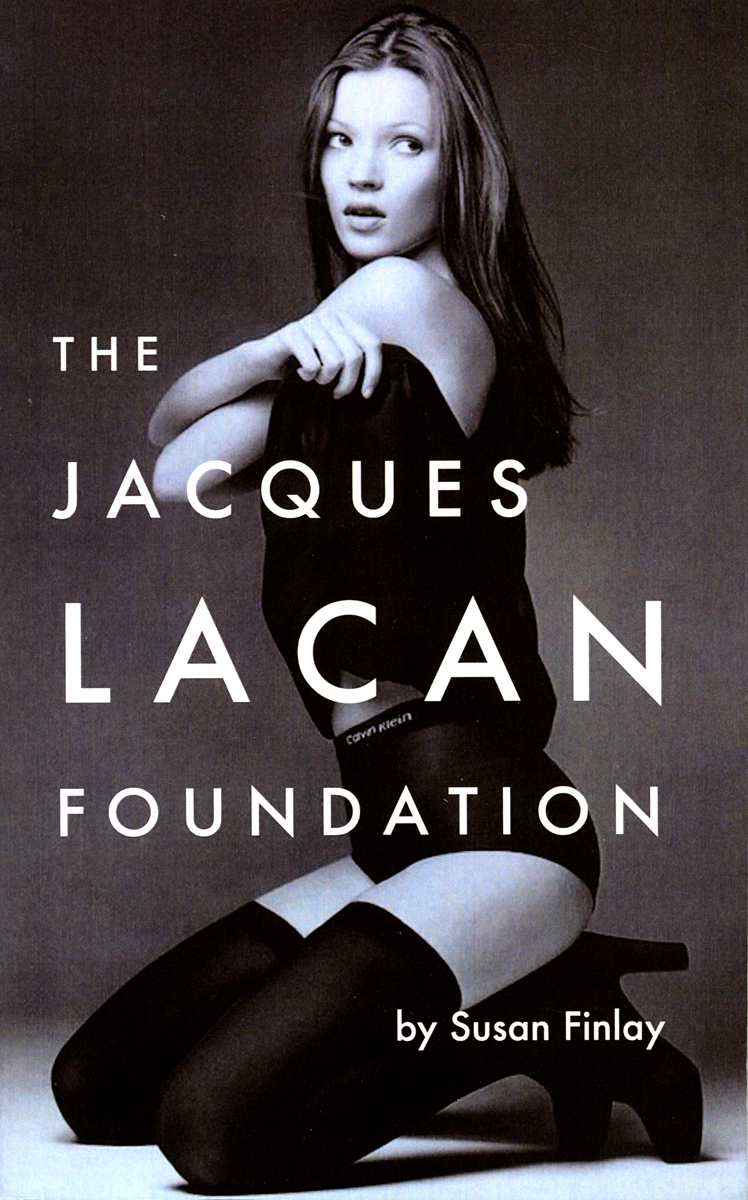Book by KARLA CORNEJO VILLAVICENCIO
Review by ALICIA MIRELES CHRISTOFF

Chinga la Migra. Fuck ICE. So begins Karla Cornejo Villavicencio’s The Undocumented Americans, a book that is equal parts curse words and incantation, burn it all down and bleeding heart, punk rock and very good girl. The literary nonfiction book that unfurls from this epigraph—and that interlaces autobiographical essay and anti-impersonal investigative journalism—is heavy and gorgeous and astoundingly humane.
To write the book, Cornejo Villavicencio spent time with Spanish-speaking immigrants living in cities across the eastern United States. What she created from those interviews is a gut-punching, many-peopled portrait of undocumented Latinx working-class life. Not what it looks like, what it feels like. Don’t come here looking for DREAMers and sweet dreams. The Undocumented Americans is a book sleepless with the knowledge of how racialized divisions of labor are actually lived: as trauma and as slow death, unspooling in real time. If you’re going to tell this story, Cornejo Villavicencio writes, you “can’t be enamored by America, not still.” That “disqualifies you.” So she begins by giving ICE the finger—a brown middle finger with a snake tattoo undulating up to its knuckle and ending with a gold-painted aqua-tipped fingernail.
The Undocumented Americans is allergic to immigration buzzwords and to lazy feel-good politics. It refuses the twinned stereotypes posed by mainstream American media: nameless laborer, suffering and speechless; or A+ student, all bootstraps and exceptionalism. Cornejo Villavicencio, born in Ecuador and raised in Brooklyn and Queens, undocumented (until very recently) and the child of undocumented immigrants, cuts through the white noise not simply with millennial realness, not simply with “fuller” stories, but with a different kind of storytelling altogether. Rather than the rote narratives of soaring success or bare life, she gives us psychic landscapes and days in the life, fiercely guarding her subjects from cliché.
In 2001, I lived in New York City’s Financial District, in NYU’s luxe and skyscraping Water Street dorm. (I think it’s worth mentioning here that although I had a full tuition scholarship and worked multiple jobs throughout college, I am still paying off the student loans I took out to cover my room and board.) That entire year, on my short commute back downtown from school or work, I could never seem to keep my eyes open. Lulled by motion of the bus, I would slip in and out of a doze. Or when I took the train instead, I would get off at Fulton Street and walk toward the East River in a different kind of daze, trying not to see what now lined the sidewalks: table after table of cheap 9/11 memorabilia. Photographs, keychains, and snow-globes, which made me think of the morning of 9/11, when I’d stepped onto the street to see sheets of white office paper, reams and reams of it, drifting down from sky in the dim morning light. Twin Tower figurines and American flags. Black and white photographs of bodies falling, of buildings in flames. Americana. That is to say, souvenirs of violence. I despised the steady stream of tourists flooding downtown, and tragedy’s quick conversion into financial gain, both here at Ground Zero and in U.S. leadership’s quick marshalling of loss into racist and profit-driven war. I looked away.
Life in those months was a kind of blur. My eyes were open and closed at the same time. And it occurred to me as I read The Undocumented Americans that this is the condition of living through history. We are there and not there at the same time. Our lives are caught in geopolitical currents of which we are only partially aware. Or maybe it would be more accurate to say, this is the condition of living American history’s stratification.
Each chapter of The Undocumented Americans is dedicated to a particular site: Staten Island, Ground Zero, Miami, Flint, Cleveland, and New Haven. The Ground Zero chapter hit me hardest. As in the cleanup efforts after Hurricane Katrina in New Orleans and Hurricane Sandy in Staten Island, the cleanup of Lower Manhattan following the World Trade center attacks—dusty, dangerous, and toxic—was largely performed by Latinx workers without protections. “The first responders were firemen and EMT workers. The second responders were undocumented immigrants.” The undocumented immigrants who sifted through the debris, who cleaned surrounding homes and buildings, who rebuilt and repaired infrastructure: these workers, hired by subcontractors under the table, were often not properly paid for their work, let alone recognized for their heroism. Years later, Cornejo Villavicencio reports, many of these “second responders” are still knit to their service: suffering from medical and mental health consequences—cancer, arthritis, asthma, high blood pressure, back pain, PTSD, anxiety, depression, paranoia—for which they struggle, still, to get the 9/11 Victim Compensation and health funds that have been allotted to other responders and to downtown residents affected by the devastation. To be recognized by the fund, victims have to “show paperwork proving they worked at Ground Zero or lost someone that day”—a problem for undocumented workers who expressly “leave no paper trail.”
Cornejo Villavicencio narrates her visits in 2017 to weekly informal 9/11 group therapy sessions run by social worker Lucero Gómez and attended by “mostly undocumented, all-Latinx former Ground Zero cleanup workers.” She spends time with Milton Vallejo, a “tall and gentle” man from Colombia, who worked nights as a security guard at the WTC and, though safely at home during the attacks, felt a strong sense of obligation when he heard the news and rushed to be part of the cleanup efforts. Karla meets up with Milton at the Queens Zoo, and he tells her about losing his closest friend Rafael Hernández, a Mexican volunteer firefighter and 9/11 first responder, in 2011. His death is officially attributed to “natural causes,” but everyone knows that buried in this phrase is the lung damage Rafael suffered inhaling 9/11 smoke—smoke emitted from the burning of “nearly three hundred thousand” human bodies and “two hundred thousand pounds of lead from fifty thousand computers” and “gold and mercury from five hundred thousand fluorescent lights” and “two thousand tons of asbestos” and “ninety-one thousand liters of jet fuel.” Showing us the intimacy of those numbers to one beloved pair of lungs, and to one bereaved heart, is the power of this book.
Not leaving a paper trail in your wake shapes the historiography of 9/11 in another way too: it leads to an incomplete count of how many lives were lost at Ground Zero. There is no telling, Cornejo Villavicencio writes, how many cooks, dishwashers, delivery people, housecleaners, security guards, and others working in the neighborhood were killed in the disaster above the official count of 2,749—the names inscribed on the 9/11 Memorial. Employers did not come forward with lists of the missing for fear of being fined. These people became as invisible in death as they were in living, Cornejo Villavicencio writes—and she knows this intimately. Her father, a taxi driver before the restrictive ID laws that followed the attacks took his license away, had to take an off the books job as a “delivery boy” (an occupational lingo the teenage Cornejo Villavicencio found offensive, but which her father and the other grown men he works with take a certain pride in) at a restaurant down in the Financial District, delivering muffins and cut fruit and bacon-egg-and-cheeses to office workers. Her father knows what it is like to be mistreated by an employer, to never be off his feet, to be looked right through by the people he serves and to live on tips, and to take pride in doing his job well despite all of this—and his daughter knows it through him, to the vast pain of them both.
Cornejo Villavicencio despises people who, like her white college classmates at Harvard her freshman year in 2007, falsely think September 11 is something that happened to them. I felt something like this rage back in 2001. I hated my NYU classmates for making themselves the center of what had happened—as if we ourselves had been the targets, rather than Americans in general; as if the hands of we Americans were anywhere close to clean. I almost got kicked out of my roommate’s family home in Long Island (where we stayed for a few days after the attacks; we were displaced from the Water Street dorm for several weeks, and NYU ended up housing us in Times Square hotels on the Great White Way) when I challenged her white, supposedly liberal, father, for bellowing indiscriminately anti-Arab tirades at the TV: “Bomb those bastards! They tried to kill my baby girl!”
But, to paraphrase a line from Tommy Pico’s Nature Poem, I feel so dumb, thinking about this makes me want to cry. I am Latina, I lived downtown, and yet I knew nothing of the labor history Cornejo Villavicencio animates in this book. I was there in the aftermath, blocks away during the rebuilding, and in a way, I saw this all happen—and at the same time I did not see it at all. My eyes were open and closed. Whereas many others, like Milton and Rafael and Cornejo Villavicencio herself, had no choice but to see it as it was happening.
The WTC attacks were a watershed: “September 11 changed the immigration landscape forever. Muslims and Sikhs became the target of hate crimes. ICE was the creation of 9/11 paranoia. The Secure Communities program would require local police to share information with Homeland Security. Immigration detention centers began to be managed by private prison groups. And New York State, as many other states, axed driver’s licenses for undocumented immigrants.” (INS became ICE in 2003—Immigration and Naturalization Services to Immigration and Customs Enforcement—and this renaming alone speaks volumes.)
Surveying this altered post-9/11 immigration landscape—and how it was made even bleaker for her own family and others like it by the 2016 presidential election and the years of the Trump administration—The Undocumented Americans keeps gaining force. The drops of memoir pool. “As an undocumented person, I felt like a hologram. Nothing felt secure. I never felt safe.” Speaking of her own mental illness, she is candid and unsententious and on fire. She calls herself “crazy”:
Pero why? My diagnoses are borderline personality disorder, major depression, and OCD. […] Researches have shown that the flooding of stress hormones resulting from a traumatic separation from your parents at a young age kills off so many dendrites and neurons in the brain that it results in permanent psychological and physical changes. One psychiatrist I went to told me that my brain looked like a tree without branches.
So I just think about all the children who have been separated from their parents, and there’s a lot of us, past and present, and some under more traumatic circumstances than others—like those who are internment camps right now—and I just imagine us as an army of mutants. We’ve all been touched by this monster, and our brains are forever changed, and we all have trees without branches in there, and what will happen to us? Who will we become? Who will take care of us?
Each chapter introduces us to more and more people, and each one feels real, realized, alive. We meet the mothers of lead-poisoned children in Flint, housecleaners in Miami out on a Saturday night, day laborers on Staten Island who stand on corners waiting for work, a farmer in Cleveland facing deportation, and a father, Francisco Valderrama, forced to take a years-long sanctuary in a New Haven church. Cornejo Villavicencio gets involved in the lives of her interview subjects, texting and fundraising and advocating, losing sleep as they face deportation, family separations, and lack of basic health care. She is not for one second deluded about the psychic investments that drive her to fight. Every adult immigrant she meets is her parent, every child herself or someone to othermother (Karla and her partner care for Francisco’s children in truly remarkable ways). Unlike a typical journalist, she “crudely” tries to change the outcomes of their stories: “I send water. I fight with immigration lawyers. I raise money. I make arrangements with supernatural spirits to stop deportations.”
Cornejo Villavicencio writes the book as an anti-establishment anthem for young immigrants and children of immigrants—especially those who, like herself, grew up poor. “I want them to read this book and feel what I imagine young people must have felt when they heard Nirvana’s ‘Smells Like Teen Spirit’ for the first time in Seattle in 1991.” She addresses them directly: “This book will give you permission to be free. This book will move you to be punk, when you need to be punk; y hermanxs, it’s time to fuck some shit up.” It’s a bad bitch rallying cry. But, sometimes, the good girl takes over. As she puts it in one interview: “I have learned that my back is as long as it is wide and I can fit 11 million people on it, and I will feed them all, and clothe them all, and nurse them all back to health, because I am an immigrant’s daughter, and my freedom was paid for in blood, and I have to pay my dues.”
As I read the stories in this book, that refrain from Nature Poem kept running through my head. Pico’s speaker trips over the wonder of bioluminescence—self-lit algae, fireflies, glowing sea stars—not because it is too beautiful for words, but because being a responsible political subject requires spinning out: “it seems foolish to discuss nature w/out talking about endemic poverty which seems foolish to discuss w/o talking about corporations given human agency which seems foolish to discuss w/o talking about colonialism which seems foolish to discuss w/o talking about misogyny.” Can he take refuge in chemistry? “In the deepest oceans / the only light is fishes— / lucifern and luciferase mix ribbons flutter in the darkness.” No. His next line is a kind of mantra: “i am so dumb thinking about this makes me cry i am so dumb.” But it’s not the complexity of political history alone that makes us dupes—it’s something specific to America’s production of white noise.
Cornejo Villavicencio is an actual genius (you should see her on IG), but she feels dumb sometimes too. Trying to soothe single mother of four Salome Allende—a 48-year old Argentine in Miami whose “husband died of brain cancer in 2012 after being turned away by every local hospital they approached because he was uninsured”—Karla texts her U.S. Census data about the high educational success rates of children of immigrants. Reflecting on this in the book, she deadpans: “I am a one-trick pony, unable to comfort with anything other than good grades.” In Flint, she tries to help by pushing the gospel of hard work she herself resists, offering to write college admissions essays for completely uninterested teens, then kicks herself for it, saying it’s the “whitest thing” she’s ever done. “I’d drunk the social mobility Kool-Aid from college prep programs run by white people when I was in high school and didn’t know how to reconcile all that with what I was seeing in Flint.” Back at the hotel with its ample supply of free water bottles, she decides she is a “bad girl in a good city” in a country that wants all Latinx and Black people dead.
I’m not white, but my Mexican and Tejana grandparents wished I could be. To assimilate (an impossible wish), my grandparents were willing to pay what James Baldwin calls “the price of the ticket.” To become American is to feign whiteness, he argues—to pay for your passage, you must forget where you’re from, blank out your culture and history, disavow your connections to other people of color and make yourself complicit in the American project of racialized labor subjugation. My grandfather, Fernando Mireles, left Guadalajara in 1923, as a four-year-old. His family, dark-skinned and working-class, followed a common migratory route of that era by working their way from Texas to the industrial Midwest, first as farmworkers and later as steelworkers. Fernando’s migration took him to Wisconsin then to Chicago then to Detroit – where my mother was born and raised – and finally, in 1962, to Westland, MI, one of its suburbs. I’m stuck on that final migration: the (non-)white flight that shaped me. The rhetoric was better life and backyard, but the truth is that my grandparents were fleeing Detroit’s Blackness and Chicanidad both, getting the hell out of Mexicantown Dodge.
My people moved to the middle: Midwest, Middle America, middle class, middle income, political moderation, the middle of America’s racial hierarchy. My grandparents did not want their children to excel, not exactly: they wanted them to speak un-accented English and to blend the fuck in. Part of what is striking about my grandparents’ story is that, back then, this was even possible: in the 60s, blue-collar jobs (my grandfather was a short-haul truck driver for much of his life) could sustain a middle-class life, even for a large Mexican Catholic family of 12. The gains (safety, privilege, class mobility) and losses (language, culture, a large measure of self-love) that came from my grandparents’ choices for the coming generations feel too enormous to wrap my head around. Perhaps because assimilation, like a spreading white fog, has hazed out family memory. Baldwin pinpoints what makes Americans dumb, numb, and dangerous:
Because they think they are white, they do not dare confront the ravage and the lie of their history. Because they think they are white, they cannot allow themselves to be tormented by the suspicion that all men are brothers. Because they think they are white, they are looking for, or bombing into existence, stable population, cheerful natives, and cheap labor. Because they think they are white, they believe, as even no child believes, in the dream of safety. Because they think they are white, however vociferous they may be and however multitudinous, they are as speechless as Lot’s wife—looking backward, changed into a pillar of salt.
As the immigration lawyer César Cuauhtémoc García Hernández relates in his recent book Migrating to Prison, ICE has a budget of $7.5 billion, twenty thousand law officers at its disposal, and the world’s largest immigration detention system, in which upward of half a million people spend time locked up each year. And this isn’t because immigration law is “broken,” he writes: the system is functioning just as it was designed to. Its aim is to “punish, stigmatize, and marginalize—all for political and financial gain.” The tides of immigration law may shift, ushering in more or less permissive policies, but the ultimate goal is steadfast: to “detain and deport” the way to an exploitable workforce. Our current moment of harsher border enforcement means more unauthorized migration, with the consequence that “poor people of color [in this case, Latinx and Afro-Latinx]” will be “dispossessed of wealth and pushed to the margins of society”—and therefore “cheaper for employers.”
The sense you get from Cornejo Villavicencio is of someone wrecked (the image of her brain as a “tree without branches”), yes, but also made wondrous by all she has seen and lived. The nerve and inventiveness of her writing are astounding. She does not hesitate to fictionalize in order to repair. For Ublado Cruz Martinez, an alcoholic day laborer drowned in a basement during Hurricane Sandy, she invents a more tender and less stigmatized ending, in which his final hours are spent nursing an injured squirrel rather than blacked out. She writes, “Did this happen? Are we in gangs? Do we steal Social Security numbers? Do we traffic our own children across the border? Is this book nonfiction? Can we imagine that he was capable of kindness, even as he was drinking? That he was capable of courage, even as he was wounded? What if this is how, in the face of so much sacrilege and slander, we reclaim our dead?”
In a more recent piece for The New York Times, Cornejo Villavicencio highlights the heightened vulnerability of migrant populations to the coronavirus pandemic, in places ranging from the makeshift migrant encampment on the U.S. border in Matamoros, Mexico, to the Elmhurst neighborhood in Queens where her immunocompromised and uninsured parents live. And she unleashes her poetic might in a warning:
Do you know about crows? As an undocumented migrant, I’ve always felt an affinity for them. Research has shown that they are as smart as a 7-year-old child. And yet, they are considered pests, undesirable birds, by most. People shoot them, or lay down barbed wire so they will not roost. If you hurt a crow, and it gets a good look at your face, generations of that crow flock could swoop and swerve and attack you. Crows never forget if you hurt them or one of their own.
As one of the fulfilled prophecies of the American dream, I’ve earned the right to foretell one. If the American and Mexican governments let us die en masse, we will haunt your children, and your children’s children, and their children too. They will never sleep in peace, and they will come to know our names.
Fucking do something, or Karla and her crows are coming for you.
On Thursday, June 18, eight years after DACA (Deferred Action for Childhood Arrivals) was announced in 2012, the Supreme Court ruled that the Trump administration could not unceremoniously terminate the program, as it had attempted to do. This victory came as an unspeakable relief for 700,000 young immigrants and their families. But what The Undocumented Americans makes amply clear is that such victories are not enough (nor, as we are now seeing, are they long-lived). Any policy that tries to carve out from the population of 11 million undocumented immigrants a group of those “deserving” of basic human and civil rights from those who are not is inherently flawed. The true fight, as the young undocumented activists leading the charge well know, is for something much bigger. #DefundPolice, #AbolishICE: these are joint struggles to dismantle a carceral state founded on the labor exploitation of racial capitalism. Citizenship is not some kind of gift or a grace (I imagine immigration papers falling from the sky, like in snow globe or a ticker tape parade), but a technology of modern state power. As the scholar Nicholas DeGenova puts it, citizenship is “an inherently exclusionary and divisive framework for the production of various degrees of non-citizenship and thus, legal non-personhood.” This is precisely what The Undocumented Americans argues in a different key—the key of life lived as a full person even while inhabiting this category of legal non-personhood.
Cornejo Villavicencio did not write this book for me, not precisely, and I know that. But it dislodges me further from my status as a third-generation pillar of salt, pecked at by crows, and I think that’s how she would have it. I don’t know how or when my grandfather became a U.S. citizen. That history was lost to white noise. But I’m sure he said this phrase more than once in his life and although he is long dead when I say it now I can hear him chant it with me: Chinga la Migra.
Alicia Mireles Christoff is Associate Professor of English at Amherst College. She is the author of Novel Relations: Victorian Fiction and British Psychoanalysis (Princeton UP, 2019). Her essays and poems have appeared in PMLA, Public Books, Los Angeles Review of Books, The Yale Review, and Peach Mag, among other venues.




